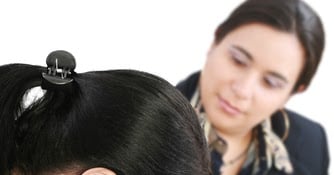Just published field-trial research on DSM-5 shows that in routine clinical practice the diagnostic...
Comparison of Youth Diagnosed With ADHD Using DSM-IV and DSM-5 Supports Criteria Revisions
 |
Kathleen Merikangas, Ph.D., and colleagues at the national Institute of Mental Health compared the prevalence and clinical correlates of ADHD as described in the two DSM editions in a nationally representative sample of U.S. youth based on the age-of-onset criterion. The sample included nearly 1,900 participants aged 12 to 15 from cross-sectional National Health and Nutrition Examination Survey (NHANES) surveys conducted from 2001 to 2004. Data on DSM-IV and DSM-5 criteria for ADHD were derived from administration of the parental ADHD module of the National Institute of Mental Health Diagnostic Interview Schedule for Children, Version IV (DISC-IV).
The researchers found that the extension of the age-of-onset criterion from 7 to 12 led to an increase in the prevalence rate of ADHD from 7.38% (DSM-IV) to 10.84% (DSM-5). Importantly, youth with later age of onset did not differ from those with earlier age of onset in terms of severity and patterns of comorbidity. “The comparability of the clinical significance of the early and later age-of-onset groups supports the DSM-5 extension of the age-of-onset criterion in ADHD,” Merikangas and colleagues concluded.
For more about changes to ADHD criteria in DSM-5, see the Psychiatric News article, "Clinicians in DSM-5 Field Trials Have Positive Response to Revisions." To order any of the publications in the DSM-5 library, click here.
(Image: Docstockmedia/shutterstock.com)





